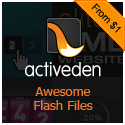It’s always a dilemma when you are in the middle of some important work and your laptop gives you that annoying message telling you that the battery is now critical, and the laptop will soon go into the hibernation mode. Well, with a little more care and a few simple and easy steps can help you increase your laptop battery capacity and also its life span letting you use it for a longer time.
Laptop-Battery
1. Switch-off unused wireless radios: Most wireless devices on a laptop keep draining the battery if switched on, even when they are not being used. So when the laptop is being used on battery power, it’s advisable to turn off the WiFi and Bluetooth services if you don’t require them at that moment.
2. Reducing the brightness of the screen: The backlight of the LCD display consumes a significant amount of battery when it’s kept at the brightest setting. Dimming down the brightness to a comfortable level can give the laptop up to 30 minutes of extra backup.
3. External devices: Most USB devices and other external devices like external hard drives or USB lights or even USB mice should be switched off and removed if not in use. For example, charging an iPod when using the laptop on battery is a very bad idea unless absolutely necessary, as it will keep draining the battery. The same goes for the integrated CD or DVD player. One should keep it empty when not in use as the rotor keeps rotating when there is a CD or DVD placed in the drive.
4. Get some extra RAM: Whenever a laptop runs short of RAM memory it end up shifting to the virtual memory which results in hard disk use, which is a much less efficient option in terms of power consumption. Putting in extra RAM does use more power, so don’t get too much extra, but when compared to the use of virtual memory it’s a more efficient option.
5. Shutdown background apps: It’s always a good idea to shut down all those background applications which you don’t regularly require (like desktop search applications), as they use CPU processing power and consequently consume battery power.
6. Use energy saving options on the OS: One can always optimize the power options available in the power settings to get maximum battery life. The notebook should be instructed to shut down the hard drives and turn the display off whenever not in use.
7. Improve battery cycle: For a healthy Lithium-ion based battery, it is always suggested to keep the electrons that are present inside in motion occasionally. That means it’s never a good idea to keep you laptop plugged in or on charge all the time as the electrons lose their ability to store energy. One should let it discharge fully and charge it completely at least once a month to keep the battery as good as new.
8. Try to reduce multitasking: When using the laptop on battery power, one should try as much as possible to use one application at a time, and should ideally shut one application completely before opening another, to reduce consumption of both processing and battery power.
9. Defrag regularly: When a hard drive is defragmented disk puts lesser stress on the battery and hard disk as it takes lesser time to find files, so in order to make the hard drive efficient one should perform defragmentation regularly, which should be at least once every month.
10. Hibernate: When running on battery, hibernating the laptop is always a healthier option than putting it on standby, or shutting it down. This is because the laptop’s hibernate mode saves it in the state it was hibernated in, and does not require the laptop to reboot all applications, thereby using much less power.
You’ve made a nice blog with a good design. Getting lots of traffic, huh? Now, consider getting it hacked. Isn’t it unfair? So, follow the steps to make your blog secure and hackerSAFE
STEP 1
Update Update Update!
Tip: Use the latest version of the Wordpress! Its always better as they fix up the Vulnerabilities and make it more safe.
How to: As soon as the new version is available, you’ll be notified on your Wordpress Admin Dashboard. Follow the process form there to update it.
STEP 2
Change Username and Password!
Tip: Wordpress provides you the default username and password i.e admin at the time of install so everyone will know your username so and its it would be easy for them to guess your password.
How to: Create a new user from the dashboard and keep an alpha numerical password even include special characters.And then sign in to phpMyAdmin through your webserver account and change user name from “admin” to something of your choice too.
STEP 3
Keep Backups
Tip: Its always good to keep a backup of your blog posts and comments, so that you can revert to the latest contents after a disaster. I suggest you backup often, depending upon your site’s traffic.
How to:There is a Wordpress backup plugin which does a pretty job. You can either email the backup or download it to your computer. Link to plugin here
Manual backup is even better to do a complete backup of your database.
STEP 4
Stop brute force attacks
Tip: Brute force is multiple attempt of logins. You can stop it!
How to: Use login lockdown plugin, its and excellent plugin which monitors login attempts to your site. It checks how many times in a short period of time the same IP range has tried to login and if in that time a particular IP exceeds the attempts allowed then this sweet plugin will lock down access privileges for a time period you set.
Download here
STEP 5
Password protect
Tip: Password protect you wp-admin
How to: Use the askapache password protect plugin It protects your Wordpress wp-admin folder which adds another layer of security by requiring a set of valid Username and Password to gain access to anything in the /wp-admin/ folder.
Easy to use, all you need to do is to create another username and password. Here, you added some more protection. It works by writing a new .htaccess file for that folder, and encrypts your new password. Highly recommended.
Download plugin from here
STEP 6
Hide Your Contents
Tip: Did you ever login http://www.yourdomain.com/wp-contents/plugins/ on your browser? Do it! You will see the list of your plugins now its again cake walk for the hackers to look at your plugin and see if you are using one with known security vulnerabilities and exploit them. So hide it
How to: Just make a blank index.html on your computer, upload it using the your ftp and put it in the /plugins/ folder and its all fixed. Its also good to add it in your /themes/ folder too. It works!
STEP 7
Block search engines
Tip: Block search engines from crawling up your wp-folders as there is no need to have all your Wordpress files indexed, so its probably better to block them so there is no need to having all your Wordpress files indexed, so its probably better to block them so when people search they do not see those files.
How To: You can block search engines from crawling your wp- folders by blocking access via robots.txt file.
Simply add this line: Disallow: /wp-*
If you are lazy again to do this then go ahead and use KB robots.txt plugin
Download from here
Posted on : Friday, November 27, 2009
Leave a Comment (0)
| Google Toolbar PageRank | Real PageRank |
| 0 | 0 – 10 |
| 1 | 10 – 100 |
| 2 | 100 – 1,000 |
| 3 | 1,000 – 10,000 |
| 4 | 10,000 – 100,000 |
| 5 | 100,000 – 1,000,000 |
- PageRank is only one of numerous methods Google uses to determine a page’s relevance or importance.
- PageRank evaluates two things: how many links there are to a web page from other pages, and the quality of the linking sites.
- The Google PageRank algorithm it’s established PR across all of the outbound links. Put differently, if you had a web page with a PR6 and had 1 link on it, the site linked to would get a fair amount of PR value. But, if you had 40 links on that page, each individual link would only get a fraction of the value.
- From this, we could conclude that a link from a page with P̸ and 5 outbound links is worth more than a link from a page with P̼ and 100 outbound links. The PageRank of a page that links to yours is important but the number of links on that page is also important. The more links there are on a page, the less PageRank value your page will receive from it.
- PageRank is based on incoming links, but not just on the number of them – relevance and quality are important (in terms of the PageRank of sites, which link to a given site).
- It often takes two full monthly updates for all of your incoming links to be discovered, counted, calculated and displayed as backlinks
- PageRank does not rank web sites as a whole, but is determined for each page individually.
- Google calculates pages PRs permanently, but we see the update once every few months .
- PR(A) = (1-d) + d [PR(t1)/C(t1) + … + PR(tn)/C(tn)]. This is the formula to calculate the PageRank (of Page A).
- PR(͉) – Each page has a notion of its own self-importance.That’s PR for the first page
- PR(TN) – That’s PR of the Nth number of page.
- C(Tn) – Its the total outgoing links from a page. The count, or number, of outgoing links for page 1 is C(T1), C(Tn) for n number of pages.
- d – All these fractions of votes are added together but, to stop the other pages having too much influence, this total vote is “damped down” by multiplying it by 0.85 (the factor “d”).
- (1 – d) – The (1 – d) bit at the beginning is a bit of probability so the “sum of all web pages’ PageRanks will be one”: it adds in the bit lost by the d It also means that if a page has no links to it (no backlinks) even then it will still get a small PR of 0.15 (i.e. 1 – 0.85). (Aside: the Google paper says “the sum of all pages” but they mean the “the normalised sum” – otherwise known as “the average” to you and me.)
- Incoming Links from popular sites are important. If pages linking to you have a high PageRank then your page gains some part of their reputation.
- Site can be banned if it links to banned sites.Be extremely careful of any out-going links from your site. Don’t link to bad neighborhoods (link farms, banned sites, etc.) Google will penalize you for bad links so always check the PageRank of the sites you’re linking to from your site.
- Illegal activities will penalize your PageRank and possibly ban your site from Google.Hidden text, deceptive redirects, cloaking, automated link exchanges, or anything else against Google’s quality guidelines can ban your site from Google.
- Different pages from a site can have different Page Rank.Search engines crawl and index web pages not websites, that is why your page rank may vary from page to page within your website.
- Content is not taken into account when PageRank is calculated. Content is taken into account when you actually perform a search for specific search terms.
- Links marked with nofollow-attribute don’t contribute to Google PageRank.Google implemented a new value, “nofollow”, for the rel attribute of HTML link and anchor elements, so that website builders and bloggers can make links that Google will not consider for the purposes of PageRank — they are links that no longer constitute a “vote” in the PageRank system.
- Bad incoming links don’t have impact on Page Rank.Where the links come from doesn’t matter. Sites are not penalized because of where the links come from
- Google penalizes link farms.Google is only concerned with pages of over 100 outgoing links. Google considers overly linked pages to be link farms, and they are penalized as such.
Google PageRank inspector is PHP scripts that can seek all of your website, include out linked page or not, and display Pagerank value for each of your website pages.
This little tool is not too much different then a tool that tells you your PageRank, however it allows you to organize your sites (with PR information) in a visual network and then correspondingly connect them with arrows. You can move them around like cards, connect them or not, and even delete them by throwing them in a trash can.
Posted on : Friday, November 27, 2009
Leave a Comment (0)
There are hundreds of lesser-known but highly-useful open-source applications available for Windows. A few of my favorites are below.
These applications range from moderately popular to downright obscure, but all of them are open-source and FREE. All of them are worth the install time if you have never tried them. As a side bonus, many of them are cross-platform as well.
Here they are, in random order:
 1. ZScreen
1. ZScreen
ZScreen is an open-source screen capture program that quietly resides in your system tray until needed. It can take screenshots of a selected region, the active window, or the entire screen. It can even send screen captures via FTP and copy the URL to your clipboard, all with just a single keystroke. Oh yeah, it can also interface with image editing software, such as Photoshop or Paint.net.
If you frequently take screenshots, ZScreen is light years faster than pressing Print Scrn and pasting into MS Paint.
 2. PDFCreator
2. PDFCreator
PDFCreator allows you to create PDFs from any program that can print. Once it’s installed, simply “print” to the virtual printer that it creates, and the resulting document can be read on any computer with Adobe Reader (or comparable software).
There are several similar programs, but if you dig open-source software, PDFCreator trumps many of the others.
 3. KeePass
3. KeePass
KeePass is one of those applications that you don’t realize how badly you need until you start using it. It securely stores and manages the login information that you use for e-mail, websites, banks, etc. Unless you always use the exact same login information (a terrible idea!), you need KeePass. It’s even available in a portable version.
I use KeePass to manage hundreds of usernames and passwords. I’d go crazy without it.
 4. HandBrake
4. HandBrake
HandBrake is a DVD to MPEG-4 converter that allows you to stick a DVD in your drive and have the video converted to a digital file for convenient viewing. It’s great for minimizing wear-and-tear on DVDs, plus it’s handy if you travel a lot and want to watch movies on your laptop.
For best results, use it in conjunction with DVD43.
 5. Notepad++
5. Notepad++
Let’s face it - Windows Notepad is a pretty wimpy text editor, and there are many better alternatives. Notepad++ kicks the original Notepad in the junk pretty hard. Best of all, it interfaces nicely with Filezilla. Here are the features:
Syntax Highlighting and Syntax Folding
User Defined Syntax Highlighting
Auto-completion
Multi-Document
Multi-View
Regular Expression Search/Replace supported
Full Drag ‘N’ Drop supported
Dynamic position of Views
File Status Auto-detection
Zoom in and zoom out
Multi-Language environment supported
Bookmark
Brace and Indent guideline Highlighting
Macro recording and playback
 6. Peazip
6. Peazip
PeaZip is my current compression/zip utility of choice. It can open almost any archive type imaginable (including ACE - be sure to grab the separate plug-in). Peazip can split/join files, offers 256-bit encryption, and integrates nicely into the right-click contextual menu. It even manages to look good in the process.
Hey, there’s also portable version AND a Linux version available. Nice.
 7. BonkEnc
7. BonkEnc
BonkEnc is a fantastic CD ripper, encoder, and audio converter. It’s tiny, lightweight, and is my application of choice for ripping and encoding CDs. BonkEnc can produce MP3, MP4/M4A, Ogg Vorbis, AAC, Bonk and FLAC files, and also features CDDB/freedb lookup.
Along similar lines, if you’re looking for a batch audio/video transcoder, take a look at MediaCoder.
 8. Launchy
8. Launchy
I admit: I’ve been spoiled by Quicksilver on Mac OS X. My favorite similar program for Windows is Launchy, an open-source keystroke launcher.
To launch a program, press Alt + Spacebar, and then type a few letters in the program name and press Enter. Boom! You can also browse folders the same way. Once you get used to it, it’s a huge time saver.
 9. Cabos
9. Cabos
Cabos is a Gnutella file-sharing program originally based on Limewire and Acquisition. Unlike some other file-shaing programs, there’s no spyware, adware, or any other crap to junk up your computer.
 10. GnuCash
10. GnuCash
If you recoil in horror at the bloat of financial programs such as Microsoft Money and Quicken, GnuCash may suit your needs. It’s a slimmer version of those programs, and it has all the features I need for managing my meager amount of money.
The interface is easy enough to understand. It actually looks a lot like a digital checkbook ledger. Don’t be fooled, though - GnuCash can handle the needs of much more demanding users.
 11. RSSOwl
11. RSSOwl
RSSOwl is a cross-platform RSS reader. It allows you to easily track updated content on multiple sites. I really like the tabbed interface.
I find RSSOwl especially useful on a laptop, but on my always-connected desktop I prefer a web-based RSS reader, such as Google Reader.
12. VirtualDub
VirtualDub is a free video capture and processing utility. Wait, it’s more than that. VirtualDub lets you capture video and then manipulate it with a multitude of plug-ins and filters. It isn’t a full-fledged non-linear editor, but it packs a powerful punch for a free program.
If you work with video on Windows a lot, you probably already know about VirtualDub. If you’re just getting into video editing, you should grab VirtualDub immediately. Heck, it doesn’t even require installation.
 13. Eraser
13. Eraser
If you are paranoid about someone else recovering your sensitive deleted data, you owe it to yourself to check out Eraser. When you delete a file, your operating system really just removes the reference to the file from the file system table. The actual data is still present and can be recovered with an undelete utility.
Eraser securely shreds your sensitive data by overwriting several times with multiple, carefully-selected patterns. In other words: once you erase it, it’s gone!
 14. Paint.NET
14. Paint.NET
Paint.NET is to MS Paint what NotePad++ is to Windows Notepad. It’s a dandy little photo editor that supports layers, unlimited undo, and a host of other features. By all rights, it should come with Windows by default.
Paint.NET isn’t meant to fill the shoes of bigger applications like Photoshop or The GIMP, but I use it almost every day for basic photo manipulation.
 15. InfraRecorder
15. InfraRecorder
Need CD/DVD burning software for Windows? It doesn’t get much better than InfraRecorder (by the same author of TUGZip).
InfraRecorder can burn audio/data discs. It can handle multi-session discs, creation and burning of disc images (ISO and BIN/CUE), and can even save audio/data track information to separate files. Oh yeah, it also has a portable version.
 16. AutoHotkey
16. AutoHotkey
It’s hard to know where to begin with this one. What can you do with AutoHotkey? Almost anything!
For starters, by using custom keystrokes and mouse-clicks, you can automate practically any repetitive task. Define any shortcut for Windows. Remap keys and buttons any way you please. Control your mouse cursor with your keyboard. By writing your own scripts, the potential is limitless.
 17. GanttProject
17. GanttProject
If you need to do any project management, GanttProject will help you get everything organized. As the name implies, it uses Gantt charts and resource load charts to help break a project into a tree of tasks, complete with dependencies.
GanttProject even allows you to exchange data with Microsoft Project, though you may find that you have no reason to do so.
 18. MP3Gain
18. MP3Gain
MP3Gain is a simple and elegant application that serves one main purpose - to automatically adjust MP3 files so they all play at the same volume. It does it without decoding and re-encoding, so the quality remains the same. No more fiddling with the volume between different songs.
 19. Filezilla
19. Filezilla
Way back in the day, I used WS_FTP. Now I exclusively use Filezilla for my file transfer needs. It supports SFTP, allows for bandwidth speed limits, and easily saves server settings.
Best of all, it seamlessly combines with text editors (such as Notepad++) for quick-and-dirty file editing on the remote server!
After all this downloading, it’s time to take a break and have some fun. Battle for Wesnoth is a single/multiplayer turn-based strategy game with a fantasy theme. You can build an army from different kinds of units, such as trolls, elves, dwarves, and orcs. There are a number of standard campaigns included, plus a growing number of user-authored campaigns available on the campaign server.
The music is well done. As a composer, I appreciate games that incorporate an orchestral soundtrack.
 21. Alien Arena
21. Alien Arena
If fantasy isn’t your thing, maybe you will like Alien Arena, a deathmatch-type game along the lines of Quake III and Unreal Tournament. The action is fast and furious, and for me mostly consists of running around and dying. I tend to suck at first-person deathmatch games anyway, but the game is quite engrossing.
The 2008 version just came out earlier this year, so join the servers and start fragging.
——
Those are some of my favorite, lesser-known open-source applications for Windows. If you have any to add, feel free to comment below.
Posted on : Saturday, March 21, 2009
Leave a Comment (2)

The balloons would provide wireless connectivity to those who don't have it. It seems a goofy idea, but Google seems to think it's worthwhile
This can't be a rumor, because The Wall Street Journal reported it; Google is considering contracting with a company with the exotic name of Space Data, or even buying it. This bit of news might just become that much hot air after a few weeks, but it's quaintly interesting nevertheless -- because it involves sending up balloons to extend a long-range cell network, or a wide-area (broadband) Internet network. In short, it goes like this: there's a tower at place A, and place B, hundreds of kilometres away, has no coverage -- so send up a balloon with transceivers into the stratosphere at place B, and the network gets extended. In fact, a signal could get spread across thousands of square kilometres this way; word is that an equivalent feat via cellular towers would need 40 of them to be put up.
No, we aren't kidding, and neither are they: balloons are an inexpensive proposition (just plastic and some gas, to be precise, and the transceivers aren't expensive either), so wireless service could be offered in remote areas at a low cost. Space Data isn't fumbling with a new concept: it already launches 10 balloons a day across parts of the southern US, providing telecom services to oil companies, among others. Their technology is even used by the US Air Force.
The technique is most often used to spread cellphone coverage to rural areas or places where cell towers are often blocked by hills and other terrain limits. This could help Google not only expand its network quickly but also change the mechanics of rolling out service over a wide area, according to the claim. With balloons relatively inexpensive to use and maintain, service could be offered in fringe areas without raising the costs for some or all users.
The part that seems really random to us is this: the balloons don't permanently remain up in the atmosphere. When they've done their duty, the transceiver comes down to earth (via parachute, of course, so no-one gets hurt...). Space Data pays $100 for each transceiver that's brought back to them. ("Look what I found! A transceiver!").
Those in the know say the bandwidth isn't all that impressive, and that lost-and-found transceiver bit (we can't stop harping on that one) just seems hilarious... Google and Space Data haven't yet commented on whether a deal is on the cards, but this one just goes to show that no-one in Google's Department Of Expansion is creativity-challenged.







 20.
20. 
